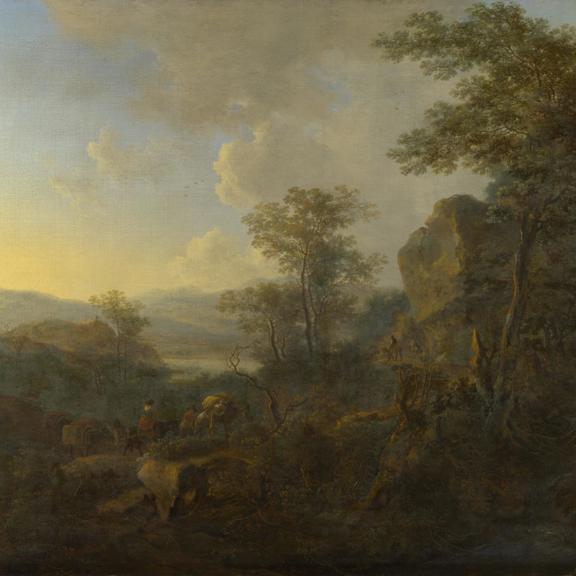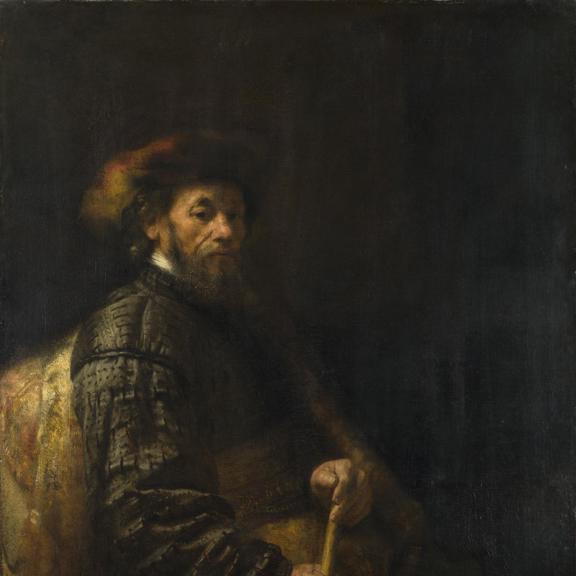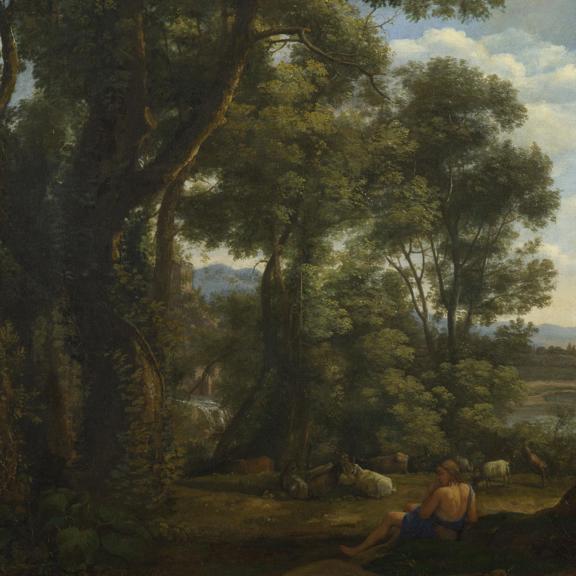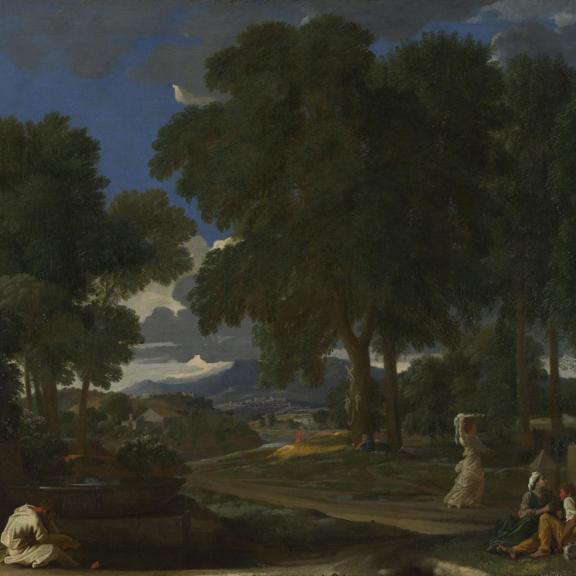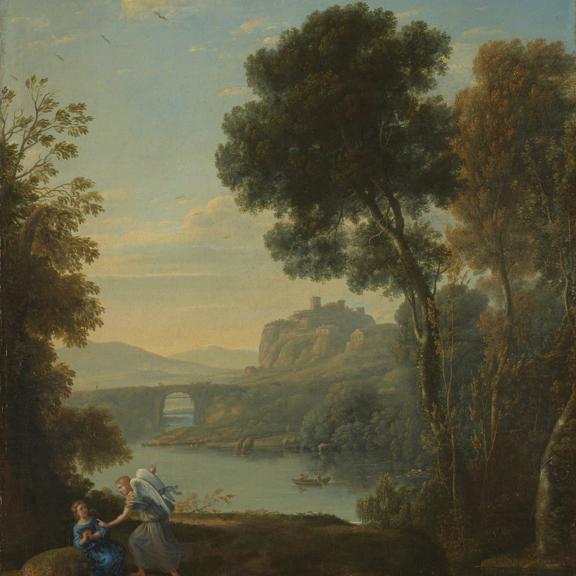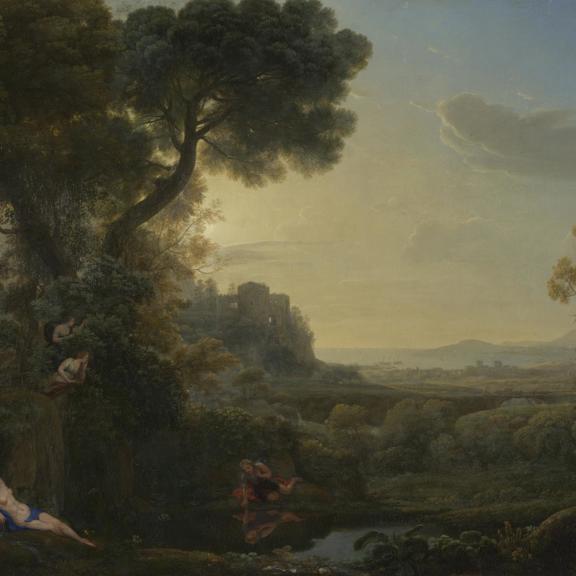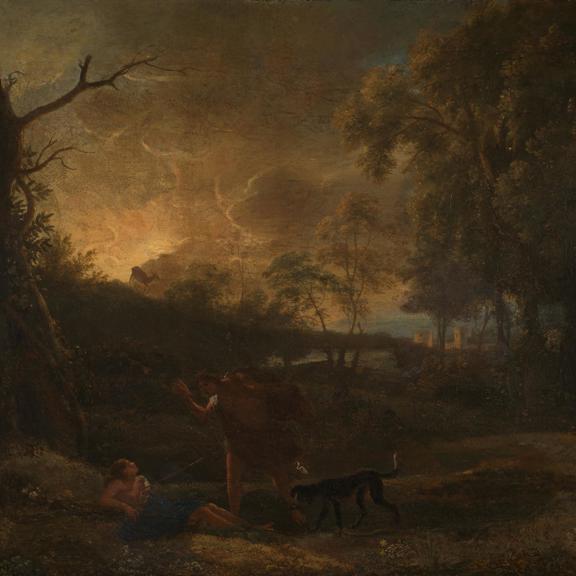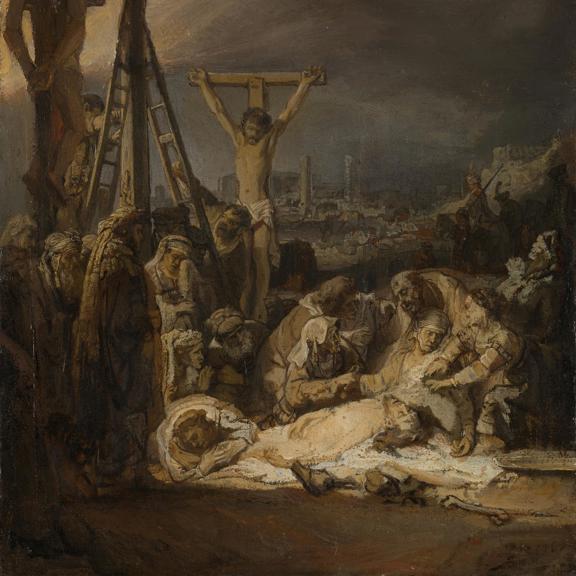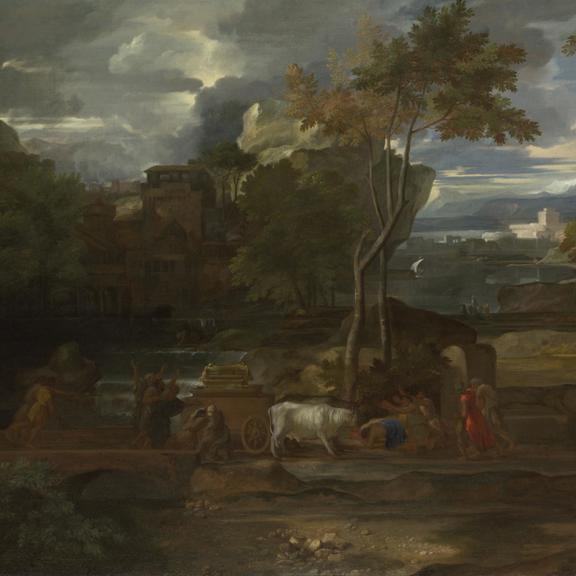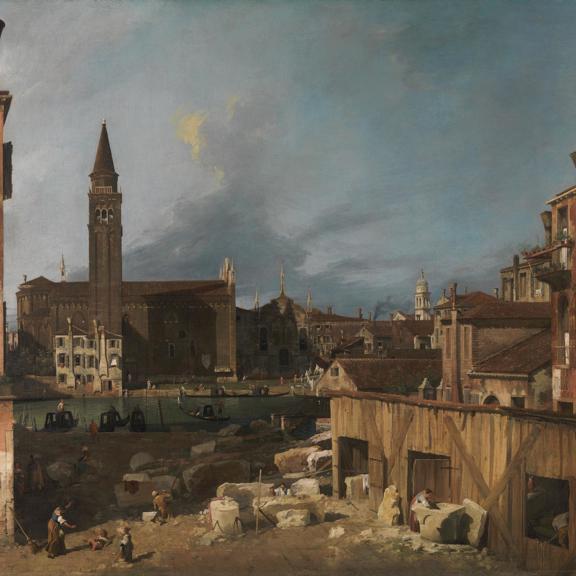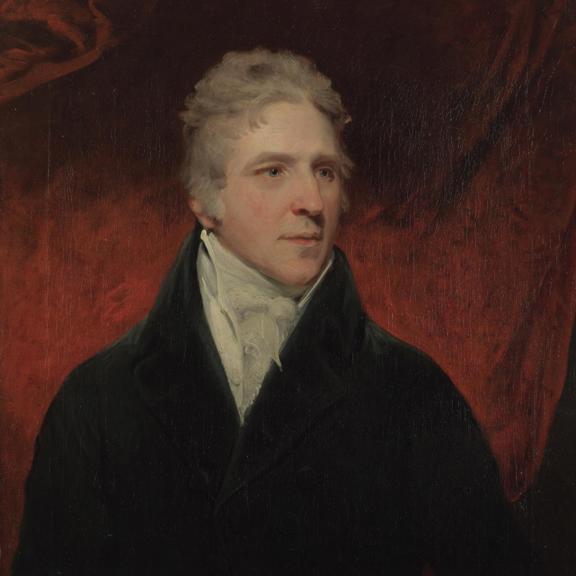Sir George Beaumont (1753 - 1827), painter, collector and connoisseur, was instrumental in the founding of the National Gallery. In 1823 he promised to give his collection to the nation if the government purchased the Angerstein collection and established a National Gallery at public expense. The Beaumont Gift eventually consisted of 16 pictures (some of which are now in the Tate Britain).
Sir George Beaumont
This person is the subject of ongoing research. We have started by researching their relationship to the enslavement of people.
Biographical notes
Politician, landscape painter and art collector; a major sponsor behind the creation of the National Gallery. He was the owner of a portrait by Sir Joshua Reynolds, the sitter of which has been identified with Francis Barber, who had been born enslaved in Jamaica, but in 1750 was brought to England.
National Gallery Trustee (1824–1827).
Summary of activity
Beaumont was Tory Member of Parliament for Bere Alston in Devon from 1790–6, but then retired from politics. He owned a number of properties, including an estate at Dunmow in Essex, but his main residence was Coleorton Hall in Leicestershire. While at school at Eton he was taught by the landscape painter Alexander Cozens, and Beaumont remained a practising landscape painter throughout his life. A friend of Reynolds, he formed his own collection of paintings.
Beaumont was a major sponsor behind the creation of the National Gallery and offered 16 paintings from his own collection on condition that the British Government bought Angerstein’s collection.
Beaumont was in the Commons 1790–1796 sitting for Bere Alston, but there is no indication in his biography in the History of Parliament of how he voted on Wilberforce’s successive motions in this period to abolish the slave trade. He was the owner of Portrait of a Man, probably Francis Barber c.1770 by Sir Joshua Reynolds (now in the Menil Foundation Collection, Houston, a copy of which is in Tate, A Young Black Man (?Francis Barber).
Barber (c.1735–1801) had been born enslaved in Jamaica, but in 1750 was brought to England by Colonel Bathurst. In 1752 he entered the household of Dr Samuel Johnson, as a servant. In 1755 Colonel Bathurst died, and in his will gave Barber his freedom and left him £12. At this point Barber left Dr Johnson’s household, although he kept in contact with him for the remainder of Johnson’s life. However, when the painting was lent in 1813 by Beaumont to the British Institution, it was entitled ‘The Black Servant of Sir Joshua Reynolds’. (Michael Bundock, The Fortunes of Francis Barber: The True Story of the Jamaican Slave who Became Samuel Johnson’s Heir (2015), 216-18.)
Abolition connections
Beaumont was in the House of Commons 1790–1796 sitting for Bere Alston. His History of Parliament biography gives no indication of how he voted on Wilberforce’s successive motions in this period to abolish the slave trade.
National Gallery painting connections
Donor: Beaumont’s gift, received in 1826, comprised the following paintings: Jan Both, A Rocky Landscape with Peasants and Pack Mules (NG71); Sébastien Bourdon, The Return of the Ark (NG64); Canaletto, Venice: Campo S. Vidal and Santa Maria della Carità (‘The Stonemason’s Yard’) (NG127); Claude, Landscape with Narcissus and Echo (NG19), Landscape with a Goatherd and Goats (NG58), Landscape with Hagar and the Angel (NG61); Studio of Claude, Landscape with the Death of Procris (NG55); Nicolas Poussin, Landscape with a Man washing his Feet at a Fountain (NG40); Rembrandt, The Lamentation over the Dead Christ (NG43); Follower of Rembrandt, A Seated Man with a Stick (NG51); and Peter Paul Rubens, An Autumn Landscape with a View of Het Steen in the Early Morning (NG66) (NG eleven paintings).
A number of paintings from the Beaumont Gift were transferred to the Tate Gallery: Sir David Wilkie, The Blind Fiddler (N00099); Sir Joshua Reynolds, A Man’s Head (N00106); Richard Wilson, Distant View of Maecenas’s Villa, Tivoli (N00108); Benjamin West, Pylades and Orestes Brought as Victims before Iphigenia (N00126).
In 1828, Lady Beaumont presented George Beaumont’s Landscape with Jacques and the Wounded Stag (now Tate, N00119) and Landscape: The wooded bank of a river, and Richard Wilson, Destruction of the Children of Niobe.
In 1962, Claude Dickason Rotch (1878–1961) bequeathed to the NG John Hoppner’s Portrait of Sir George Beaumont of 1803 (NG6333).
Bibliography
D. B. Brown, 'Beaumont, Sir George (Howland)', in J. Turner et al. (eds), Grove Art Online, Oxford 1998-, https://doi.org/10.1093/gao/9781884446054.article.T007153
Checked and found
— Item on publisher's website
D. R. Fisher, 'BEAUMONT, Sir George Howland, 7th Bt. (1753-1827), of Coleorton, Leics. and Great Dunmow, Essex', in History of Parliament Trust (ed.), The History of Parliament: British Political, Social & Local History, London 1964-, 1790-1820, https://www.historyofparliamentonline.org/volume/1790-1820/member/beaumont-sir-george-howland-1753-1827
Checked and found
— Item on publisher's website
F. Owen and D. B. Brown, 'Beaumont, Sir George Howland, seventh baronet', in C. Matthew et al. (eds), Oxford Dictionary of National Biography, Oxford 1992-, https://doi.org/10.1093/ref:odnb/1872
Checked and found
— Item on publisher's website
UCL Department of History (ed.), Legacies of British Slave-ownership, London 2020, https://www.ucl.ac.uk/lbs/
Checked and not found
— Item on publisher's website

